Maximizing the Suburban Garden
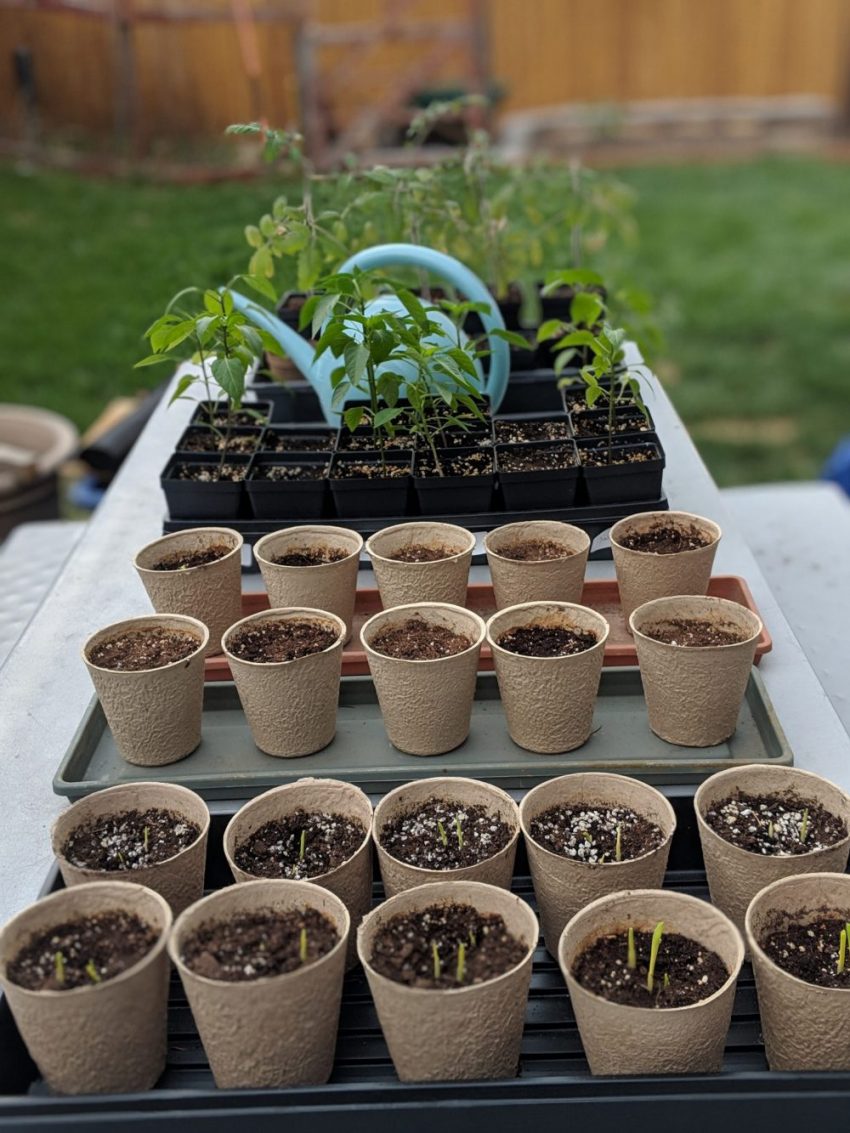
A suburban garden can be as challenging as it is rewarding. It’s all in figuring out how to best utilize the space you have! I am starting year 9 in my backyard garden (at least in this house), and we have had to make many tweaks along the way. It’s always a process!
Yesterday I started our nightshade seedlings (4 Roma tomato’s, 4 Jalapenos, 3 Poblanos, 12 Hatch peppers, and 3 new-to-me hybrid peppers). It is one of my favorite days of the year, actually. Somehow, feeling the dirt in my fingers and tucking the seeds into all the little pots makes the rest of February and March feel bearable. I spend a ridiculous amount of time looking at the pots… as if somehow I will miraculously see a beautiful little sprout poke its head out.
We are working on Garden 2.0. Our original garden began with one 8×6 raised bed. We moved into our home in June 2013, so it was a mad dash to get something built so I could at least plant a few things.
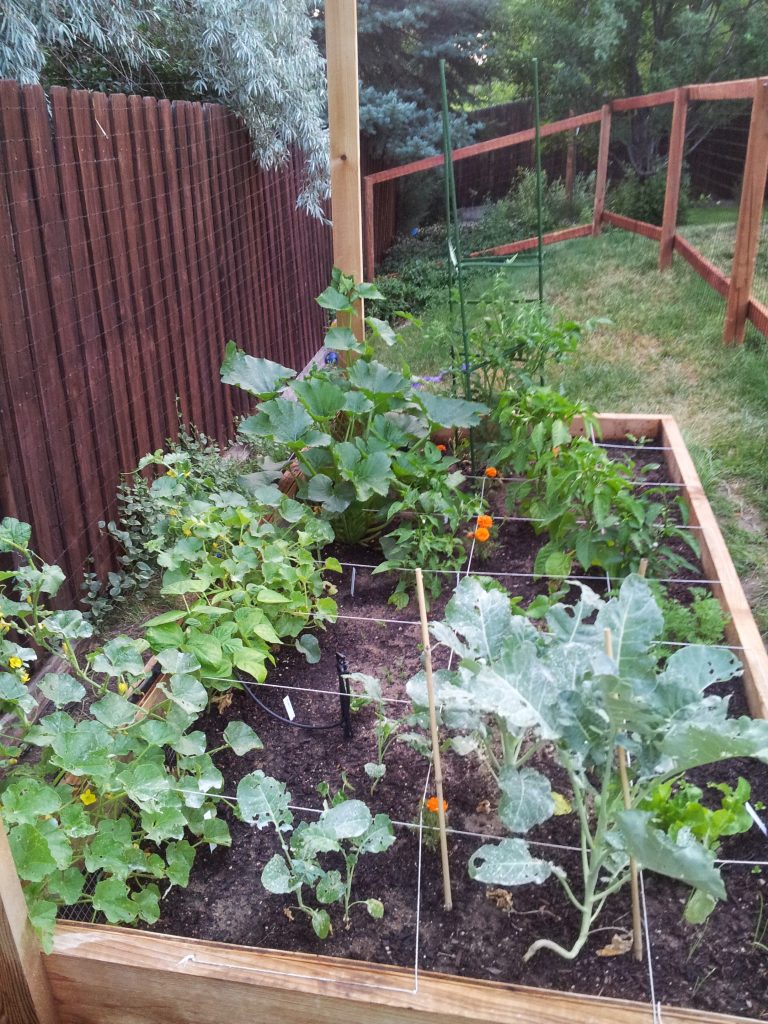
I utilized square foot gardening exclusively and things went really well. Eventually, we had four 8 foot raised beds, and one 4×4 foot bed for strawberries. The area we decided to use was not all that favorable for anything else, as it was a steep hill that dropped down to the fence line in the back 8 feet or so of our yard. It wasn’t good for a whole lot else. After a few years of gardening this way, I decided that I was tired of trying to maneuver around the hills between the bins, and that I would much rather have one uniform garden area. So, we ripped it up and started fresh.
Garden 2.0 was leveled off using sand bags as a retaining wall. We used a beautiful (and gigantic) fir tree that we had to cut down- we lovingly called her Berta- as our path through the garden. I have to take into account where things have been planted in years prior, and do my best to make sure I am rotating crops as best I can. Sometimes I even utilize areas in our Xeriscaped front yard, although I have to cautious about what I plant, as the deer are not kind to us and will take whatever they can find and are willing to eat. If you’re interested in 2.0, check out our garden transformation story.
To garden in small spaces required a fair bit of upkeep and planning, but if you do it right you can achieve some wonderful harvests! One of the biggest lessons I’ve learned here is to think about realistically what you and your family will consume. I have wasted space in my garden a few times growing something that seemed “cool” but ended up going to waste because we just didn’t eat enough of it. Here is a list of what I typically plant in my garden (keep in mind this garden is overall approximately 32 feet by 7 feet including the foot path through the middle of it):
- Tomatoes
- Jalapenos
- Poblanos
- Pepperoncini’s
- Corn
- Garlic
- Potatoes
- Lettuce (multiple varieties)
- Spinach
- Carrots
- Onions
- Zucchini
- Cucumber
- Cantaloupe
- Watermelon
- Green Beans
- Broccoli, Cauliflower, or Brussel Sprouts (I tend to rotate)
In addition, we have several perennial plants that we tend to:
- Peach tree
- Plum tree
- Apple trees (2)
- Strawberries & Pineberries
- Raspberries
- Grapes
- Asparagus
Believe it or not, a month or so after the July 2019 pic was taken, my husband snapped one of me in it and you couldn’t see me. We joked that I was going to start needing a machete to get through the path.
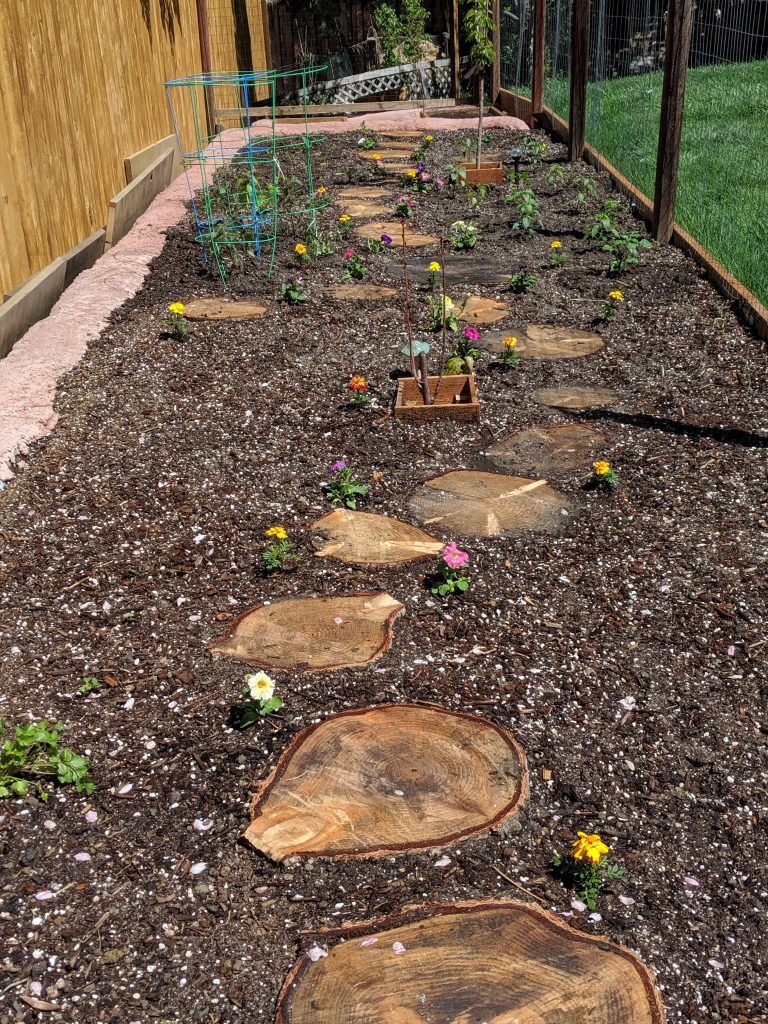
Garden 2.0- May 2019 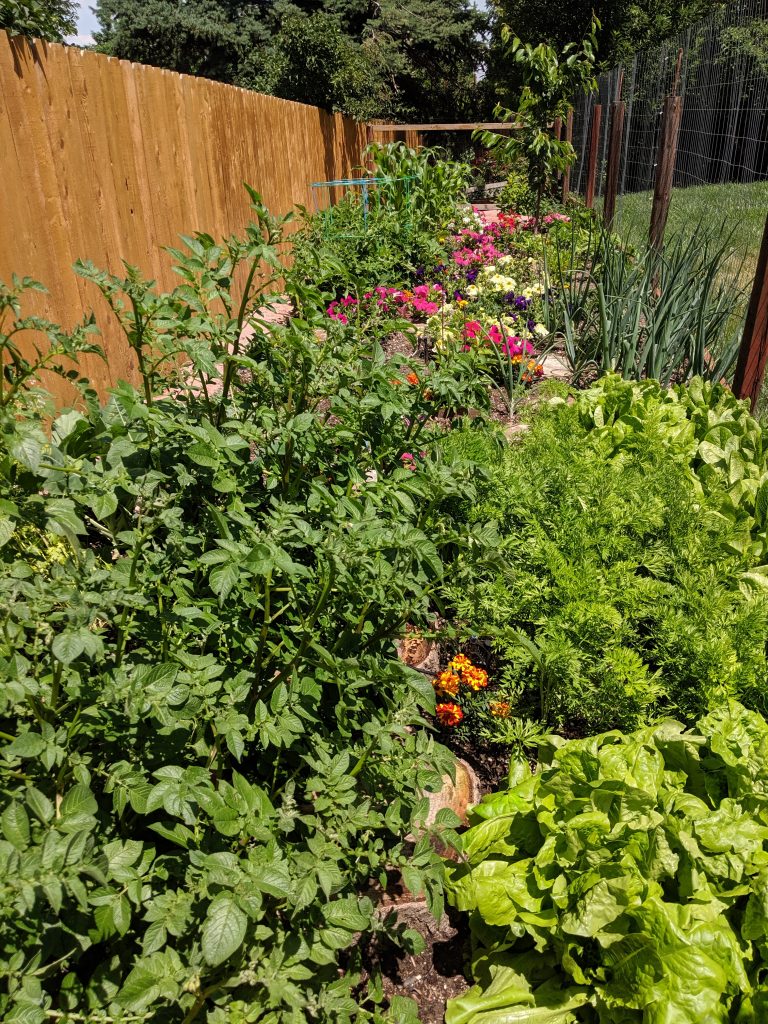
Garden 2.0- July 2019
As this site progresses, I hope to post about some important aspects of gardening, including soil health, crop rotation, seedlings, companion planting, soil amendments, and more. For now though, I’m stoked that my new babies are starting!

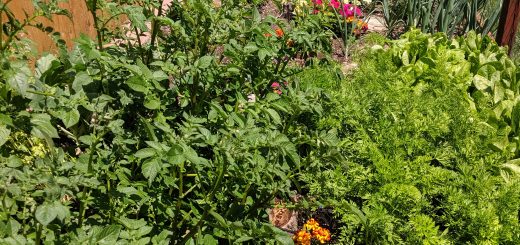
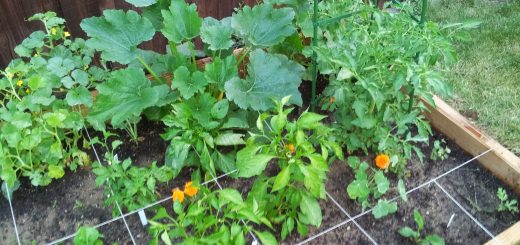

Recent Comments